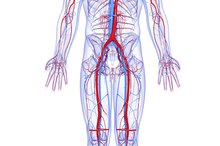Types of Central Venous Catheters
An intravenous catheter is a hollow and flexible plastic tube that is inserted into a vein to administer fluids and medicines 2. Most intravenous catheters are peripheral, meaning they go into a vein far from the heart, such as in the wrist. However, catheters can also be inserted into larger veins closer to the heart. These are called central venous catheters.
Single, Double and Triple Lumen Central Venous Catheters
Single, double and triple lumen catheters are central venous lines with one, two or three ports to connect to IV tubing, medications or monitors. These are usually inserted into the internal jugular vein in the neck, the subclavian vein in the upper chest under the clavicle or into the femoral vein in the leg.
Cordis
Types of IV Catheters
Learn More
The cordis catheter is a central venous line with only one lumen. It has a less flexible tube for insertion. This catheter is useful during emergencies because it can be inserted more rapidly than many other catheters for the administration of medications and fluid resuscitation. However, fluids are typically more rapidly administered from peripheral intravenous lines because the length and diameter of these lines slow down fluid administration compared to a short wide peripheral line, according to "The ICU Book."
- The cordis catheter is a central venous line with only one lumen.
- This catheter is useful during emergencies because it can be inserted more rapidly than many other catheters for the administration of medications and fluid resuscitation.
PICC Line
PICCs, or peripherally inserted central catheters, are inserted into a peripheral vein, such as in the arm near the elbow. They are very long, and are threaded into a vein near the heart. They are typically used when the central line needs to be used for a longer period of time, such as several weeks or more, because they are less likely to lead to infection than other types of catheters.
Implanted Central Line
What Are the Largest Blood Vessels in the Body?
Learn More
Some central lines can be surgically implanted -- typically in the chest -- and reside under the skin. The port can be accessed by a needle through the skin to deliver medications such as chemotherapy. Since the port is buried under the skin, these lines have a relatively low rate of infection.
Related Articles
References
- "The ICU Book"; Paul L. Marino; 2006
- "Emergency Medicine Manual"; O. John Ma, David Cline, Judith Tintinalli, and Gabor Kelen; 2003
- Velissaris D, Karamouzos V, Lagadinou M, Pierrakos C, Marangos M. Peripheral inserted central catheter use and related infections in clinical practice: a literature update. J Clin Med Res. 2019;11(4):237-46. doi:10.14740/jocmr3757
- Li Y, Cai Y, Gan X, et al. Application and comparison of different implanted ports in malignant tumor patients. World J Surg Onc. 2016;14:251. doi:10.1186/s12957-016-1002-6
Writer Bio
Dr. Matthew Fox graduated from the University of California with a Bachelor of Arts in molecular, cell and developmental biology and received a M.D. from the University of Virginia. He is a pathologist and has experience in internal medicine and cancer research.








